Filter by
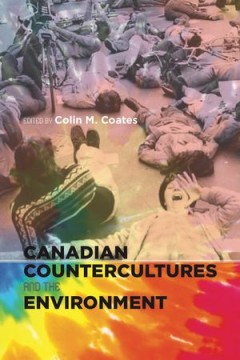
Canadian Countercultures and the Environment
Studies of the radical environmental politics of the 1960s have tended to downplay the extent to which much of that countercultural intellectual and social ferment continued into the 1970s and 1980s. Canadian Countercultures and the Environment adds to our knowledge of this understudied period. This collection contributes a sustained analysis of the beginning of major environmental debates in t…
- Edition
- -
- ISBN/ISSN
- 9781552388150
- Collation
- -
- Series Title
- -
- Call Number
- -

Calgary
How have our interactions with animals shaped Calgary? What can we do to ensure that humans and animals in the city continue to co-exist, and even flourish together? This wide-ranging book explores the ways that animals inhabit our city, our lives and our imaginations. Essays from animal historians, wildlife specialists, artists and writers address key issues such as human-wildlife interactions…
- Edition
- -
- ISBN/ISSN
- 9781552389683
- Collation
- -
- Series Title
- -
- Call Number
- -

Baffin Island
A geographer with extensive research experience in the Canadian North, Jack D. Ives has written a lively and informative account of several expeditions to Baffin Island during the “golden age” of federal research. In the 1960s, scientists from the Geographical Branch of Canada’s Department of Energy, Mines, and Resources travelled to Baffin to study glacial geomorphology and glaciology. T…
- Edition
- -
- ISBN/ISSN
- 9781552388303
- Collation
- -
- Series Title
- -
- Call Number
- -
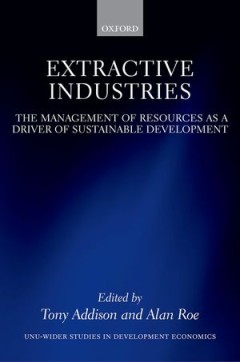
Extractive Industries
New initiatives recognize that resource wealth can provide a means, when properly used, for poorer nations to decisively break with poverty by diversifying economies and funding development spending. Extractive Industries: The Management of Resources as a Driver of Sustainable Development explores the challenges and opportunities facing developing countries in using oil, gas, and mining to achi…
- Edition
- -
- ISBN/ISSN
- 9780198817369
- Collation
- -
- Series Title
- -
- Call Number
- -
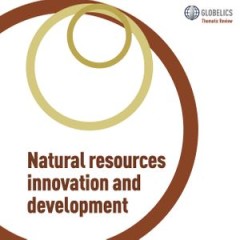
Natural resources, innovation and development
n this Globelics Thematic Review, the author team presents and discusses recent research on the relationships between natural resources, innovation and development, and suggests some implications of this body of knowledge for policy makers. The Review sets out to explore three interlinked questions with a particular focus on innovation and industry dynamics. First, to what extent is it currentl…
- Edition
- -
- ISBN/ISSN
- 9788771123678
- Collation
- -
- Series Title
- -
- Call Number
- -
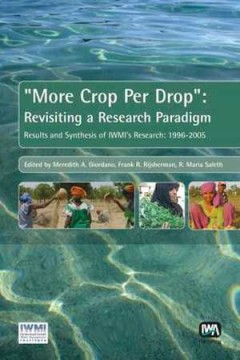
More Crop Per Drop
This volume is an analytical summary and a critical synthesis of research at the International Water Management Institute over the past decade under its evolving research paradigm known popularly as 'more crop per drop'. The research synthesized here covers the full range of issues falling in the larger canvas of water-food-health-environment interface. Besides its immediate role in sharing kno…
- Edition
- -
- ISBN/ISSN
- 9781780402284
- Collation
- -
- Series Title
- -
- Call Number
- -
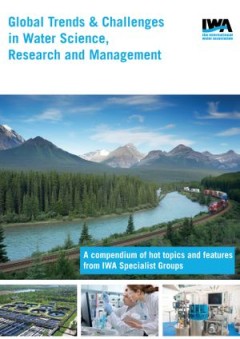
Global Trends & Challenges in Water Science, Research and Management
The global water challenge is unprecedented. Climate change, rapid urbanisation, increasing consumption and demand for food and energy, and changing land use, will leave few countries and communities unaffected. The demand for water and sanitation services is greater than it has ever been, and water has never been higher on the agenda. The Sustainable Development Goals (SDGs) not only provide a…
- Edition
- -
- ISBN/ISSN
- -
- Collation
- -
- Series Title
- -
- Call Number
- -
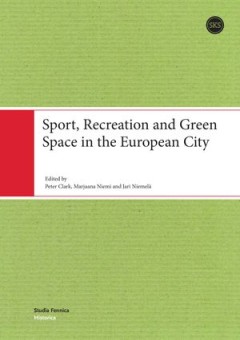
Sport, Recreation and Green Space in the European City
Green space has become a major issue in European cities in recent years as a result of enhanced environmental awareness, urban marketing, planning policy and growing population densities. Up to now, however, the subject of sports areas and grounds has attracted little research, despite the fact that since the First World War such public and private areas – from football pitches and running tr…
- Edition
- -
- ISBN/ISSN
- 9789522227911
- Collation
- -
- Series Title
- -
- Call Number
- -
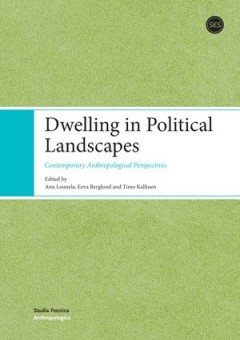
Dwelling in Political Landscapes
People all over the globe are experiencing unprecedented and often hazardous situations as environments change at speeds never before experienced. This edited collection proposes that anthropological perspectives on landscape have great potential to address the resulting conundrums. The contributions build particularly on phenomenological, structuralist and multi-species approaches to environme…
- Edition
- -
- ISBN/ISSN
- -
- Collation
- -
- Series Title
- -
- Call Number
- -
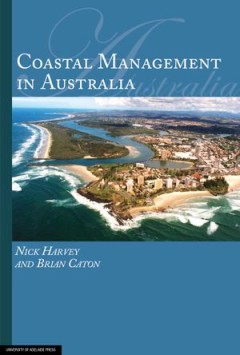
Coastal Management in Australia
The coast is one of our most valuable assets but how is it being treated and what is being done to look after it? Coastal Management in Australia is the first book to provide a comprehensive overview of this important subject. Interesting case studies are used to illustrate human impact on coastal processes as well as demonstrating the global significance of the coast and the international impe…
- Edition
- -
- ISBN/ISSN
- 9780980723038
- Collation
- -
- Series Title
- -
- Call Number
- -
 Computer Science, Information & General Works
Computer Science, Information & General Works  Philosophy & Psychology
Philosophy & Psychology  Religion
Religion  Social Sciences
Social Sciences  Language
Language  Pure Science
Pure Science  Applied Sciences
Applied Sciences  Art & Recreation
Art & Recreation  Literature
Literature  History & Geography
History & Geography